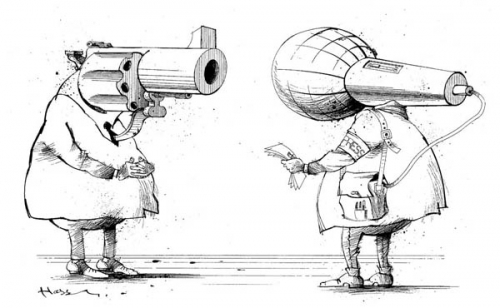Come out, ’tis now September, the hunters’ moon’s begun,
And through the wheaten stubble we hear the frequent gun;
The leaves are turning yellow, and fading into red,
While the ripe and bearded barley is hanging down its head.
— “All Among the Barley,” British folk song
September the 29th is the Feast of St. Michael the Archangel, traditionally known as Michaelmas. Though not as widely observed nowadays, in medieval and early modern Europe this feast — falling as it does around the autumn equinox — was important both as a holy day and as a harvest festival, the last day of summer and the growing season. Like other “quarter days” and seasonal observances, its traditional customs are a synthesis of Christian devotion and European folk traditions.
The word “harvest” comes from the Old English word hærfest [1], meaning “autumn.” In England, the harvest season traditionally began with Lammas (old English for “loaf-mass”) on August 1, which marked the end of the hay season. Lammas was a religious as well as an agricultural festival, the day when the first loaf of bread made from the flour of the new harvest would be brought to church to be blessed. The Gaelic festival of Lughnasadh commemorates the sacrifice of Taltiu, the mother of the sun-god Lugh, who died of exhaustion after clearing the fields of Ireland for planting. The Harvest Home [2] festival in old England, also known as “Ingathering,” occurred around the date of the autumn equinox. Neopagans and Wiccans celebrate the equinox under various names, “Mabon” being the most common (though the name itself is a neologism). And the American Thanksgiving [3], of course, is our version of a harvest festival, though coming significantly later in the year.

In old England, Michaelmas marked the end of the harvest. It was the largest festival of the season, associated with country fairs and bonfires. It was a time for the settling of accounts and hiring new labor for the coming season, retaining strong association with hiring fairs even into the 20th century. It was customary at this time of year to feast on the “Michaelmas goose,” called the “green goose” or “stubble goose” because it fed on spring grass and was therefore leaner than its Christmas counterpart. In Scotland, celebrants made St. Michael’s Bannock from the cereals grown on the family land and cooked it on a lambskin, representing the fruits of the fields and the flocks. Blackberry desserts, such as pies and Michaelmas dumplings, were also traditionally prepared on this day. British folklore [4] relates that when St. Michael expelled Satan from heaven, the devil fell into a thorny blackberry bush and cursed its fruit. It is therefore considered unlucky to eat blackberries after Michaelmas, which commemorates the date of that precipitous fall.
The primary focus of this day in the Christian calendar, of course, is the commemoration of St. Michael, the warrior archangel who defeated the rebellious angels and cast Satan into the pit. He is venerated as the patron saint of soldiers, policemen, paramedics, and those in peril on the sea, and represents a figure in Christian history that is largely forgotten today: the holy warrior.
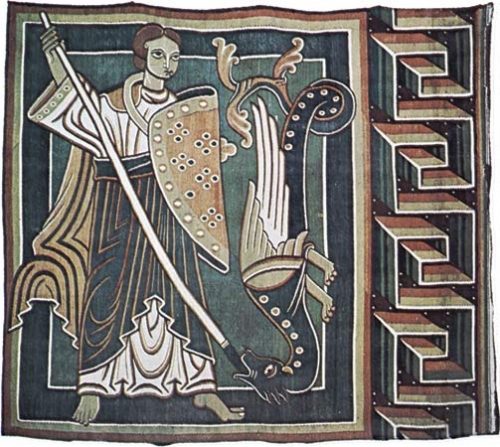
Michaelmas therefore seems an opportune time to revisit the themes in Christian history and doctrine that pertain to the warrior caste of old Europe. I am well aware that many on the New Right have a negative perception of Christianity, and given the state of the contemporary Church this is unsurprising. Nor do I believe that Christianity is the panacea for the West, a return to which will put all to rights and “save us.” [5] However, while I do not hope to win any converts, I hope that this essay will at least serve as a corrective to some of the current misunderstandings of the Christian religion, the faith which has been at the heart of the European soul for over fifteen hundred years. In the conclusion, I will discuss the place St. Michael as an archetypal holy warrior, and his particular relation to the harvest time.
Christianity Critiqued from the Right
The Rightist criticisms of Christianity will be well known to readers. It is reputed to be a life-denying creed, promoting an ascetic “slave morality” that subverted traditional European societies, precipitated the downfall of Rome, and led inexorably to the universalist, humanitarian insanity of the contemporary Left. It is rooted in Judaism and Oriental mysticism and thus fundamentally alien to the European spirit. Its emphasis on the uniqueness and importance of the individual soul promotes destructive tolerance, pathological altruism, pacifism, and egalitarianism and therefore discourages adherents from fighting for their own interests and those of their people. And so on. Christianity, seen in this light, is the poison in the veins of the modern West. Its teachings may be appropriate for ascetic, world-weary priests and resentful lumpenproles, but it is totally alien to the heroic worldview of the warrior caste and the mighty men who built Western civilization.
This critique of the religion, most powerfully articulated by Nietzsche, is a compelling rebuke of the humanitarian pseudo-Christianity that developed in the nineteenth century, and which currently prevails in almost every major denomination in the West. However, it fails to account for the traditional form that Christianity took in the West for over a thousand years.
I would like to address some of the above criticisms, in an admittedly abbreviated fashion, in order to lay the groundwork for a specific discussion of the warrior caste. It is important to emphasize that the common feature of these critiques is that they regard Christianity as monolithic, and therefore alien to Europe, despite its long presence in the West and undeniable importance to Western development. This is born of a rationalist, Enlightenment tendency, buttressed by Protestant literalism and exclusive emphasis on the Bible (sola scriptura), to ignore the important fact that Christianity in the West developed into a distinct religion in its own right, and should therefore be distinguished from the version that arose in Palestine, or for that matter the versions that developed in Eastern Europe, Latin America, Africa, etc. Thus, this article particularly addresses Western Christianity, the faith of Christendom, historically identified with Catholicism but not necessarily exclusive to it. And Protestant criticisms aside, one does not have to agree with every decision or action by the papal Curia, or deny the existence of bad priests and decidedly unimpressive practitioners, in order to acknowledge the validity of the ancient doctrine and ritual. As it stands, however deeply flawed it may be, the Church is the last bastion of unbroken tradition and spiritual values in the Western world. It should become clear that there was once a fully functional and organic society that fully embraced the Christian religion, which permeated not just the lower and priestly classes but the warrior caste as well.
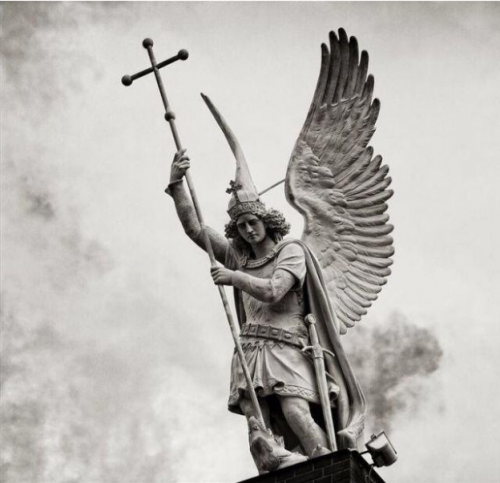
The slavish ideas of the contemporary Left — radical egalitarianism, distributive justice, hedonism, democracy — play no part in historical Christian doctrine. To argue that traditional Christianity preaches this insanity is plainly wrong. To argue that it has become infected by such ideas is merely to admit that the Christian community is susceptible to subversion. But what faith community is not? Hinduism today is a shadow of its former self, with the traditional caste system all but abolished. It was itself subverted by Buddhism, which — however noble [7] its origins — is now regarded by Western adherents as nothing more than a mélange of meditation, self-fulfillment, and social justice activism. Neopaganism is infested by Leftists continually wringing their hands over potential racists in their midst, and the virile warriors of ancestral Europe would be disgusted by the limp-wristed Wiccans of today. While much of Christian practice throughout the West has indeed been corrupted into sentimental humanitarianism, this is due to a rejection of fundamental points of doctrine, not an inevitable consequence of them. The prevalent Left-wing perversion of Christianity essentially places its highest value upon mankind and strives to achieve an egalitarian utopia on earth: to “immanentize the eschaton [8],” as Eric Voegelin put it. The same applies to communism, socialism, and other Leftist ideologies that critics such as Nietzsche trace to Christianity.
Rightists who criticize Christianity’s “slave morality” believe (again with Nietzsche) that this is attributable to its Jewish roots. They argue that these ignominious origins render Christianity unsuitable for Europeans, and sometimes regard the whole religion merely as a Trojan Horse of Jewish subversion, an ancient prototype of the Frankfurt School. This is despite the fact that Christ himself criticized orthodox Jewry of his day for their dry legalism and rank hypocrisy; despite the fact that he was murdered by these same hierarchs; despite the fact that many of the earliest expositors of Christianity aimed their message at Gentiles, and taught that adherence to the Old Law was unnecessary and in some cases harmful; and despite the fact that until the 20th century and the promotion of “Judeo-Christianity” and evangelical fawning over Israel, Jews have been regarded as outsiders and viewed with suspicion throughout the West.
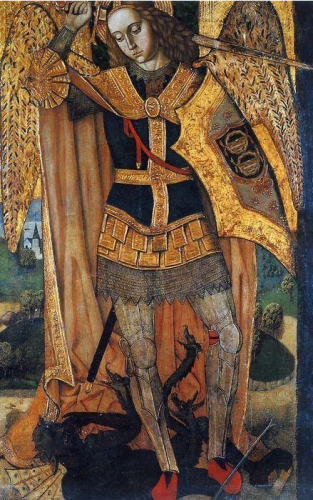
Certainly, Christ emerged from a Jewish milieu (though his teaching was in opposition to the orthodoxy). And it is true that the Church has incorporated the Old Testament into its holy canon, and believes it to contain prophecies and prefigurations of Christ. However, Judaism is not the only religion to prophesize a future figure of divine justice and restoration, nor are such prophecies absent from Indo-Aryan religions: medieval Christians believed that the coming of Christ was also foretold by the Sibyl of Cumae and in Virgil’s Fourth Eclogue [9], and one can also point to the Hindu Kalki [10], the Buddhist Maitreya [11], and the Zoroastrian Saoshyant [12] as other manifestations of this universal idea. Much of the anthropological and metaphysical framework of the Hebrew Bible, the omniscient God locked in battle with a principle of evil, the fall of man due to manipulation by that power — is present in the Indo-Aryan Zoroastrian religion. In addition, Christian doctrine incorporated the truths of Greek and Roman philosophy (particularly Neoplatonism and Stoicism), and in practice and form Christianity has often taken on a regional character, owing much to European folk religion. Thus, Christianity can be seen as a synthesis of what is best in religion, adapted to the soul of Western man, and not merely as a heretical outgrowth of Judaism — whose influence is obviously significant, but should not be overemphasized. As it developed in the West, I would be so bold as to assert that Christianity is far more Greek and Frankish than Jewish in character.
Traditional Christianity did not deny differences among humans, individually or culturally. The equality of souls before God is the only respect in which people are the same. Otherwise, humans are clearly different in terms of gifts, virtues, and bloodlines. All men might be endowed with a soul, but what they choose to do with that divine spark determines their place in the chain of being. Those whose lives and actions are most aligned with the will of God are considered saints. This category does not just consist of monks, priests, and hermits, but also kings and warriors: Joan of Arc, Martin of Tours, Louis the Pious [13]. While no one has a right to the unbridled exploitation of another (which I hope most people will agree on), hierarchy exists for a reason and historical Western Christianity is quite comfortable with this notion. In addition to affirming the existence of earthly hierarchies, Western Christian tradition affirms and acknowledges the existence of valid ethnic, cultural, and racial distinctions [14]. These are not simply regarded as obstacles to be overcome, prejudices of a primitive and pagan age, but considered a divine gift in their own right. And as rulers have an obligation to protect their own people, traditional Christianity does not counsel or condone the sacrifice of one’s own subjects or citizens to a nebulous “humanity.”
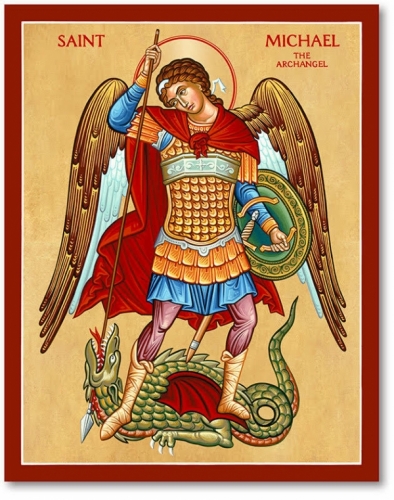
Finally, the notion that Christianity rejects all virility and places supreme emphasis on human comfort and welfare is patently false. Unlike modern Catholic Social Teaching, which is unfortunately infected by Liberation Theology, traditional Western Christianity prioritizes many things above the mere preservation of human life: the salvation of souls, the maintenance of social order, the administration of justice, the defense of the community against its enemies. In contrast to most contemporary Christian organizations, which have indeed succumbed to the Enemy and preach universalism, egalitarianism, and a degree of tolerance bordering on nihilism, traditional Christianity was characterized by a far more demanding and warlike mentality. The remainder of this essay will examine the historical manifestations of this warrior faith, beginning with Christ himself.
Christus Victor and the Church Militant
Critics of Christianity, as well as many of its contemporary adherents, depict Christ exclusively as a teacher of love, nonviolence, and resignation, who counseled his disciples to abjure the sinful world and patiently await the life to come. This characterization misses many significant aspects of Christ’s teaching expressed in the Gospels. Those who emphasize his nonviolence ignore his exhortation that he came not “to bring peace, but a sword [15];” his instruction to his disciples that “he who has no sword, let him sell his garment and buy one [16];” his praise for the faith of the centurion [17], and his violent expulsion of the moneychangers [18] from the Temple. Those who emphasize Christ’s love and doctrine of nonjudgment ignore his constant condemnations of the hypocritical Pharisees [19] as well as comments about separating the wheat from the chaff [20], the sheep from the goats [21]. Far from resignation, he counseled stoicism and endurance of hardship [22] to his apostles in furtherance of their mission: the total defeat of the Enemy.
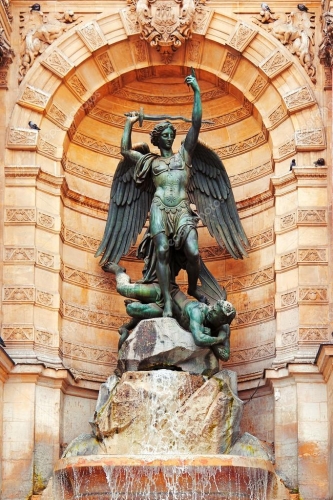
Indeed, the traditional understanding of Christ’s death was not simply an act of meek resignation, but a conscious and powerful rebuke to the forces of darkness. This known as the Christus Victor [23] view of atonement, which is arguably the oldest understanding of Christ’s death. While most Christians nowadays believe that Jesus died in order to slake God’s wrath against a sinful mankind (“for your sins”), the prevalent Christus Victor understanding is that Christ’s death and Resurrection liberated man from the powers of death, evil, Satan, and legalistic religion. Since mankind was severed from its connection with the divine (“the Fall”) in the material realm, God’s incarnation and death had to occur in this realm as well, in order to decisively defeat the powers that bind mankind and restore their potential for transcendence. The Resurrection thus represents the light’s triumph over darkness, the sanctification of the material world, and the restoration and elevation of the human soul and person. This is the idea of the triumphant Christ, Christ the King, which animated the early Christians and the faithful of old Europe. This is not a god of guilt and suffering and weakness, but of strength and self-overcoming. Christians are not simply to rely on Christ for salvation, but to follow their King’s example and transcend the merely human within themselves, to ascend to their natural role as viceroys and contemplators of Creation.
Thus, in contrast to the feminized understanding of Christ prevalent today, Western Christianity is a warlike creed, exhorting its followers to ceaseless combat [24] against “against principalities, against powers, against the rulers of the darkness of this world, against spiritual wickedness in high places.” C.S. Lewis encouraged Christians to regard the world as “occupied territory [25]” and themselves as secret agents: “Christianity is the story of how the rightful king has landed, you might say landed in disguise, and is calling us to take part in a great campaign of sabotage.” Hence the term “church militant.”
There is, I believe, no better modern depiction of this warlike, vigorous conception of Christ than the beautiful poem of Ezra Pound, “Ballad of the Goodly Fere [26]” (“fere” meaning “mate” or “companion”), which is worth reading in its entirety:
Ha’ we lost the goodliest fere o’ all
For the priests and the gallows tree?
Aye lover he was of brawny men,
O’ ships and the open sea. [. . .]
Oh we drank his “Hale” in the good red wine
When we last made company,
No capon priest was the Goodly Fere
But a man o’ men was he. [. . .]
I ha’ seen him drive a hundred men
Wi’ a bundle o’ cords swung free,
That they took the high and holy house
For their pawn and treasury. [. . .]
He cried no cry when they drave the nails
And the blood gushed hot and free,
The hounds of the crimson sky gave tongue
But never a cry cried he. [. . .]
A master of men was the Goodly Fere,
A mate of the wind and sea,
If they think they ha’ slain our Goodly Fere
They are fools eternally.
This ballad, of course, is derived from Northern European poetic forms, and excellently captures how Christianity was understood and adopted by ancient Europeans. This is the subject of the next section.
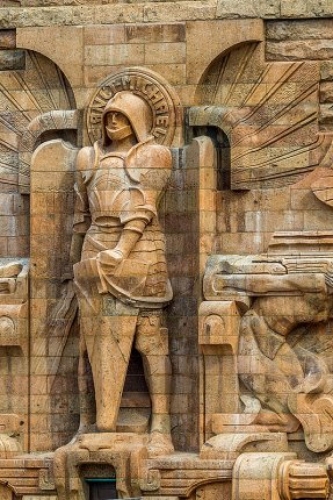
Germanized Christianity and the Emergency of Chivalry
Christianity spread throughout the Empire and became the state religion of Rome during the reign of Constantine, who issued the Edict of Milan [27] in 313 AD. The Nietzschean interpretation is that Christianity caused the fall of Rome by embracing ascetic and life-denying values, but it seems more plausible that its widespread adoption was a response to the collapse of Roman society and religion that had already begun. Attempts by Julian the Apostate to restore the ancestral tradition were unsuccessful because it had lost its vitality and was no longer widely accepted. Christianity remained the unifying force in the Mediterranean world even after the collapse of Rome, and was soon adopted by the invading Germanic tribes, some willingly and some by force. This naturally changed the form of Christianity in significant ways and gave birth to the Western Christianity of the Catholic Middle Ages.
It would be incorrect to say that this “Germanized Christianity” completely changed the character of the original creed, transforming a life-denying and pacifistic faith into a tool for social cohesion. As explained above, original Christianity is rife with martial imagery and exhortations, and never condemned war or government (“turn the other cheek” [28] is understood by almost all traditional expositors as a prohibition against destructive individual vengeance, rather than nonresistance to evil). Indeed, one of Christianity’s vehicles of transmission was the Roman soldiery [29], whose faith evidently did not prevent them from carrying out their duties. Constantine’s conversion reputedly occurred on the battlefield.
Nevertheless, the focus and external forms of Christianity did change radically once it was adopted by the Europeans. These changes are convincingly detailed in James Russell’s The Germanization of Early Medieval Christianity [30]. He argues that Eastern Christianity developed in a largely alienated and anomic urban milieu, and was influenced by the otherworldly ethos of the mystery religions prevalent in that area. In Northern Europe, it encountered a civilization that was heroic, magico-religious, patriarchal, pastoral-agricultural, and warlike. Missionaries to the Anglo-Saxons and Franks emphasized the role of Christ as a warrior God, akin to Wotan, allowing for the sanctification of warfare in the name of God. The cult of saints, relics, and holy places, as well as the proliferation of holy days and festivals, served to redirect the same devotion and festivals of the pre-Christian religions.
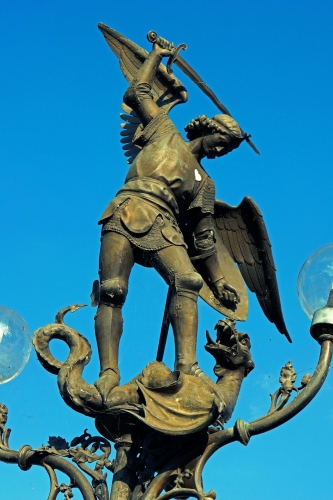
Anglo-Saxon poetry provides a particularly stirring example of this warlike, syncretic Western Christianity, in such poems as The Dream of the Rood [31] and Beowulf [32]. The following quotation is from the Heliand [33], a ninth-century paraphrase of the gospels written in the style of an Anglo-Saxon epic. Here is Christ speaking to his apostles:
He promised them Heaven’s Kingdom and spoke to the heroes:
“I might also tell you, O My companions,
With true words, that you shall henceforth be
The light of this world, fair among warriors,
Over many folk, beautiful and sweet,
For the children of people. Your great works may not
Become hidden because of the heart with which you make them known.” (1389-94)
The highest social expression of Western Christianity is the code of chivalry, which tempered the ferocity of the Viking-Germanic warrior class and directed knightly endeavors to the service of the King, the Church, and the people, particularly the innocent and defenseless. The chivalric ideal is a synthesis of the warrior code of the classical and Northern world with the Christian ethic. Hence the “Nine Worthies [34],” the paragons of chivalry in the Middle Ages, features three representatives from the classical world, three from the Old Testament, and three from the medieval age (Charlemagne, King Arthur, and Godfrey de Boullion). This ideal of noblesse oblige, loyalty to Church and King, and martial valor in service of God formed the ideal foundation for the feudal system.
Since the Renaissance, it has been commonplace to criticize the medieval era as a period of darkness and fanaticism. And even those critics of Christianity who admire the Catholic Middle Ages, such as Evola, believe that it was great in spite of Christianity, rather than because of it. But even Evola acknowledged that Christianity had a “galvanizing effect” on the peoples of Western Europe:
In spite of everything, Christianity revived the generic sense of a supernatural transcendence. The Roman symbol offered the idea of a universal regnum, of an aeternitas carried by an imperial power. All this integrated the Nordic substance and provided superior reference points to its warrior ethos, so much as to gradually usher in one of those cycles of restoration that I have labeled Christianity is a part of the European soul, but refigured from its Asiatic and life-denying origins; Germanized, transformed into the motivating creed behind chivalry, Rhineland mysticism, Gothic statuary, French stained glass, King Arthur, etc. (Mystery of the Grail [35], p. 120)
However, again, it is necessary to emphasize that every element of the Christian religion that made the Middle Ages great was present from the foundation, and was simply amplified and developed by its contact with Germanic Europe. The life-denying resignation attributed to Christianity by Nietzschean critics did indeed arise in Europe in the form of Catharism, but this sect was denounced as heretical and ultimately destroyed [36] (quite unjustly). Feudalism, chivalry, mysticism, Gothic architecture, and holy warfare are all expressions of the Germanic spirit under the influence of Christianity, and to those who are not blinded by the secularism and humanism of the Enlightenment, these represent some of the highest achievements of Western civilization. This is nowhere more apparent than in the military monastic orders of the Crusades.
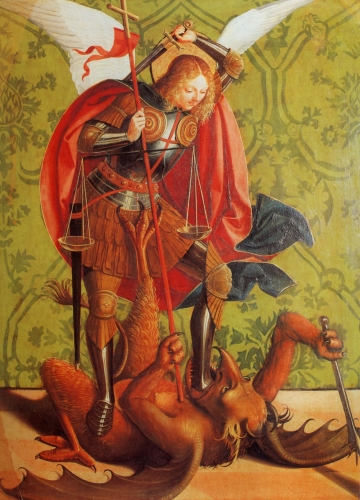
The Holy War: Templars and Teutonic Knights
The culmination of Western chivalry is to be found in the campaigns of the Crusades. Aside from true atrocities such as the siege of Zara [37] and the sack of Constantinople [38], the Crusades represent one of the few genuine moments of pan-European unity and military effort in the name of a shared European ideal. It gave Europe many of its tales of chivalry, heroism, and martial valor. This is particularly true of the monastic military orders such as the Knights Templar. These holy warriors, drawn from several European peoples, wedded the ferocity of the Frankish and Teutonic warriors with the chivalry and devotion of the Christian ethic, and therefore represented the pinnacle of Western knighthood. As Bernard of Clairvaux, the mystic and founder of the Benedictine Order who supplied the Rule for the new order, wrote in De Laude Novae Militiae [39] (In Praise of the New Knighthood):
This is, I say, a new kind of knighthood and one unknown to the ages gone by. It ceaselessly wages a twofold war both against flesh and blood and against a spiritual army of evil in the heavens. When someone strongly resists a foe in the flesh, relying solely on the strength of the flesh, I would hardly remark it, since this is common enough. And when war is waged by spiritual strength against vices or demons, this, too, is nothing remarkable, praiseworthy as it is, for the world is full of monks. But when the one sees a man powerfully girding himself with both swords and nobly marking his belt, who would not consider it worthy of all wonder, the more so since it has been hitherto unknown? He is truly a fearless knight and secure on every side, for his soul is protected by the armor of faith just as his body is protected by armor of steel. He is thus doubly armed and need fear neither demons nor men.
The Templars were the ultimate warrior monks. Their lives were highly regimented, with the inner cadre of knights committing to celibacy, an austere diet with frequent fast days, and rigorous physical training and prayer. They fought with extreme conviction to liberate the Holy Land and defend the pilgrims and Crusader states established there. The knights who formed the core of the order were drawn from the nobility, but individuals of other ranks and marital status could join in auxiliary roles. Its strength and wealth became so great as to pose a threat to the King of France, leading to its annihilation on fabricated charges of heresy. The Teutonic Order [40] was also renowned for its combination of religious devotion and martial valor, and would form a central component of Prussian and German identity into the twentieth century.
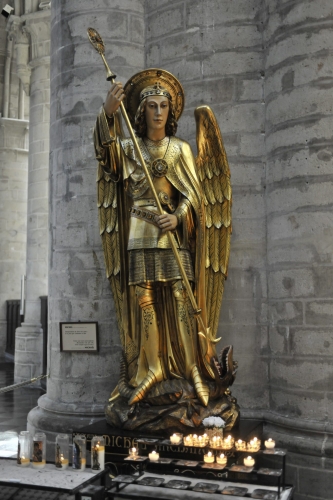
Evola, though critical of Christianity, held these orders in high regard. He seems to have regarded them as the last true bastions of tradition and initiation in the West, with their emphasis on the ascesis of action, military discipline, and self-transcendence through both the greater and the lesser (internal and external) Holy War. Based upon statements made during their trials, it appears that the Templars initiated their highest class of knights into an esoteric form of Christianity:
During the Middle Ages, the realization of the human personality was believed to consist either in the path of action or in the path of contemplation; the two paths usually referred to the Empire and to the Church, respectively. As is well known, this was Dante’s view. In its deeper aspect, Ghibellinism more or less claimed that through the view of earthly life as discipline, militia, and service, the individual can be led beyond himself and reach the supernatural culmination of human personality through action and under the aegis of the Empire. This was related to the character of a nonnaturalistic but “providential” institution acknowledged in the Empire; knighthood and the great knightly Orders stood in relation to the Empire in the same way in which the clergy and the ascetic Orders stood in relation to the Church. These Orders were based on an idea that was less political than ethical-spiritual, and partially even ascetic, according to an asceticism that was not cloistered and contemplative, but rather of a warrior type. In this last regard, the most typical example was constituted by the Order of Knights Templar, and in part by the Order of the Teutonic Knights. (Men Among the Ruins [41], p. 207)
These military monastic orders are similar in nature to King Arthur’s legendary court, particularly in the quest for the Holy Grail. The Grail legend is one of the most significant myths in the Western psyche, an amalgam of Celtic, Germanic, and Catholic themes, representing a striving for wholeness in the psychological, political, and spiritual realm. Sir Galahad, one of only three knights to achieve the Holy Grail and the most renowned for his purity and gallantry, was likely inspired by Bernard de Clairveaux’s conception of the holy warrior. He was, significantly, equipped with a white shield emblazoned with a vermillion cross — the very emblem of the Knights Templar.
Muscular Christianity
The last manifestation of this warlike spirituality is the nearest to us in time: the “muscular Christianity [42]” of the Victorian era and early twentieth century. Developed in response to the perceived effeminacy of the mainstream churches, muscular Christianity emphasized physical strength and moral courage as necessary to doing God’s will on earth. As Thomas Hughes [43] wrote in 1861, its adherents promoted “the old and chivalrous Christian belief, that a man’s body is given him to be trained and brought into subjection, and then used for the protection of the weak, the advancement of all righteous causes, and the subduing of the earth which God has given to the children of men.”

In this rebirth of the Christian warrior ideal, which was largely developed in Anglo-American Protestant churches but also had its Roman Catholic manifestations (for instance, the Knights of Columbus [44]), emphasis was placed upon physical strength. Churches organized boxing clubs and scouting organizations to teach young men the rigors of combat and woodcraft. Rather than the plaintive, melancholy, or sentimental hymns sung in churches, these muscular Christians would sing [45], in the worlds of Charles Richards (1915), “songs of character, of service, of brotherhood, of Christian patriotism, of aggressive missionary spirit, of the practical Christian life.” It promoted active involvement in the din and strife of the real world, and was a driving force behind the Social Gospel Movement. Muscular Christianity essentially sought to operationalize the Lord’s Prayer, affirming “Thy will be done on Earth as it is in heaven.”
The essence of muscular Christianity was summarized by Theodore Roosevelt [46]:
If we read the Bible aright, we read a book which teaches us to go forth and do the work of the Lord; to do the work of the Lord in the world as we find it; to try to make things better in this world, even if only a little better, because we have lived in it. That kind of work can be done only by the man who is neither a weakling nor a coward; by the man who in the fullest sense of the word is a true Christian. . . We plead for a closer and wider and deeper study of the Bible, so that our people may be in fact as well as in theory “doers of the word and not hearers only.”
This muscular, activist model of Christianity that emerged in the Victorian era was far from perfect. In its engagement with politics, it could lend itself to abolitionism (think “Battle Hymn of the Republic”) just as well as to the chivalric ethos of the Second Ku Klux Klan. Its strong association with Progressive Era reforms likely hastened the decline of the mainstream churches into spiritually lukewarm appendages of the Left. The whole movement was indelibly tainted by the fact that it arose in a democratic and Protestant society and therefore lacked the elements of hierarchy and willing obedience that must characterize any true religious-military order. However, it was nevertheless a major motivating ethos behind the last generation of WASP elites who sought to maintain America as a traditional, hierarchical nation of European settlers. It also stands as the last movement to fully embrace the virile, warlike dimensions of Christianity in the contemporary West.
St. Michael: Archetype of the Holy Warrior
And there was war in heaven: Michael and his angels fought against the dragon; and the dragon fought and his angels, and prevailed not; neither was their place found any more in heaven. And the great dragon was cast out, that old serpent, called the Devil, and Satan, which deceiveth the whole world: he was cast out into the earth, and his angels were cast out with him.
— Revelation 12:7-9
This brings us back to the figure of St. Michael. In Christian tradition, he is an archangel — prince and “Archistrategos” of the heavenly armies, first defender of the Kingship of Christ, the invincible warrior who conquered the Dragon and all his minions and cast them into Hell. St. Michael is the archetypal holy warrior, perfectly aligned with his Lord’s will, fighting with detachment and iron determination against the Enemy, upholding Order against Chaos. He is also an archetypal dragonslayer in the Indo-Aryan tradition, akin to Thor, Saint George, and Beowulf. As one writer insightfully notes [47],
As a healer, warrior and peace-maker, St. Michael is the Archangel honored as the guardian and guide of the individual in his/her battle for the self. In historic Germanic tradition, Michaelmas was the time of strength, of exercising one’s will, pitted against those things that challenge and threaten to overwhelm the spirit. This retains at some cultural level the virtue of Wotan (Odhin) whose own resilience fought and conquered all, leading him to self-victory and triumph. In that historic culture, such challenge was manifest in the “worm” and in the most aged of depictions, the dragon beneath the spear of St Michael is more akin to a writhing worm than any dragon or later demonic “devil.” This spear inherited according to theology as that very same attributed to Wotan as the harbinger of destiny, and is thus the arrow of truth and the dispeller of all falsehoods, including self-deceit.
But that is not all. In addition to his martial association as patron of soldiers and policemen, St. Michael is also regarded as a healer, protector of the innocent, and guide at the hour of death. He therefore represents the constructive obverse of the warrior’s fury, that which makes the difference between a mere barbarian and a true knight: the ability to restore that which is broken. He is envisioned as the particular guardian of God’s people, specifically in Christendom. He was accordingly the most important saint in the Middle Ages, with monasteries in his name — such as Mont Saint Michel in Normandy — believed to ward off demons from the borders. He was also a patron of many of the Catholic nationalist organizations that arose in the twentieth century, most notably the Romanian Iron Guard, formally known as the Legion of St. Michael the Archangel [48].
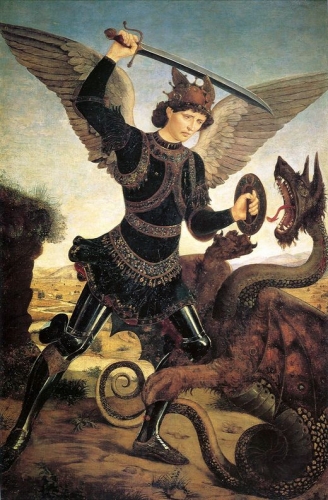
St. Michael embodies a primordial Indo-European archetype of the holy warrior, the knight and defender. This is well-understood. What of his association with the harvest, and the special seasonal significance of this festival of Michaelmas?
St. Michael’s association with the harvest began in the fourth century, when he was viewed as a guarantor of rain and consequently a patron of agriculture. One reason for St. Michael’s association with autumn, which marks the end of the growing season and the beginning of nature’s dormancy and symbolic death, is due to his role as a defender and guide. He is the divine light guiding man through the uncertainty of the winter months, steeling man for the battle against darkness, hunger, and cold that lie ahead.
I believe that an additional explanation for this association may be warranted. The harvest is a celebration of nature’s bounty, a feast of thanksgiving, a time of year when the fruits of the fields and forest are gathered and stored. But this requires effort, a separation of the wheat from the chaff, a winnowing out of what is unnecessary and harmful. This is also the role played by St. Michael as a guide to souls after death, and an essential quality of the holy warrior: to struggle against the baser impulses and make oneself a fitting servant of one’s people and one’s God. Moreover, the harvest requires effort not just in cultivation but also in defense. The world is a place of beauty and bounty, but it requires warriors to defend it against the wickedness and snares of the Enemy. The association of the holy knight St. Michael and the harvest feast reminds us that all that is good, pure, and holy on this Earth must be defended — by gods, angels, and above all by men, with all the strength that is in us.
At this time of year the aster blooms, known as the Michaelmas Daisy, one of the last flowers to appear before the onset of winter. Just as St. Michael is a protector against darkness and evil, just as the holy warrior defends his land, his people, and his gods against those who would destroy them, this simple daisy stands amidst the dying weeds and grasses, a burst of life in the approaching gloom. This is what all of us, we Knights of Old Europe, should aspire to be: symbols of light and beauty in the darkness, heralds and guardians of the coming spring.
If you want to support Counter-Currents, please send us a donation by going to our Entropy page [49] and selecting “send paid chat.” Entropy allows you to donate any amount from $3 and up. All comments will be read and discussed in the next episode of Counter-Currents Radio, which airs every Friday.
Don’t forget to sign up [50] for the twice-monthly email Counter-Currents Newsletter for exclusive content, offers, and news.





 del.icio.us
del.icio.us
 Digg
Digg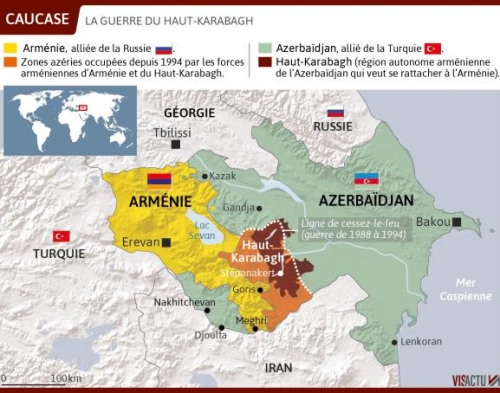
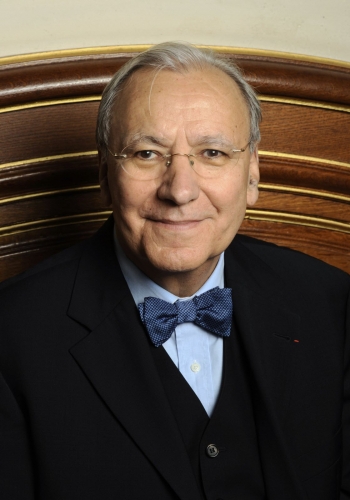
 Pour aller plus loin :
Pour aller plus loin : 
